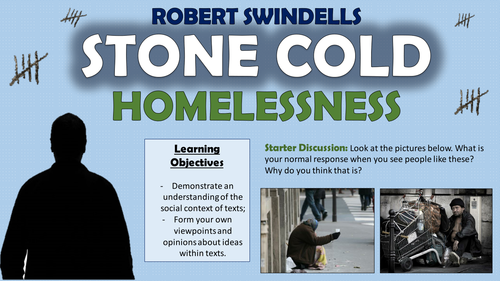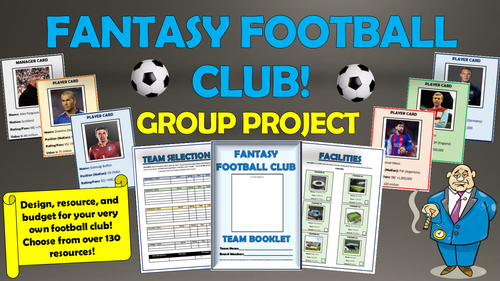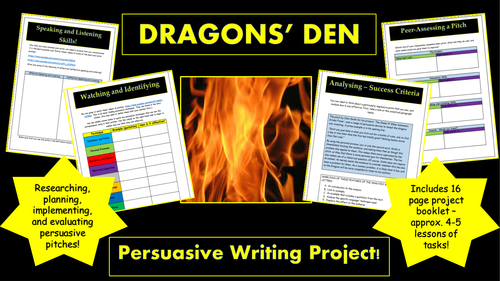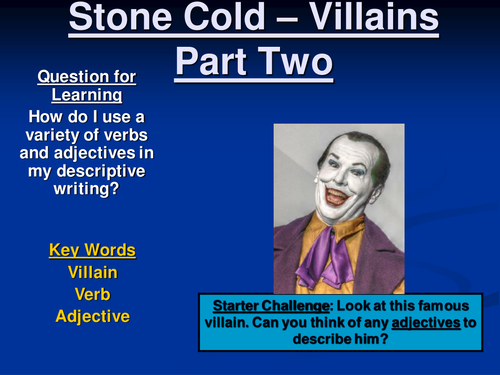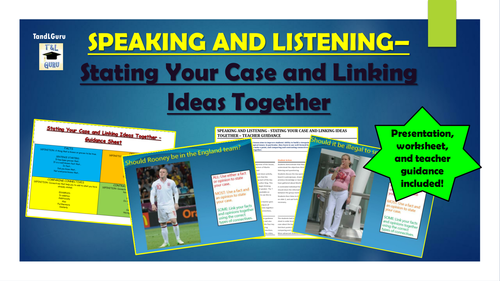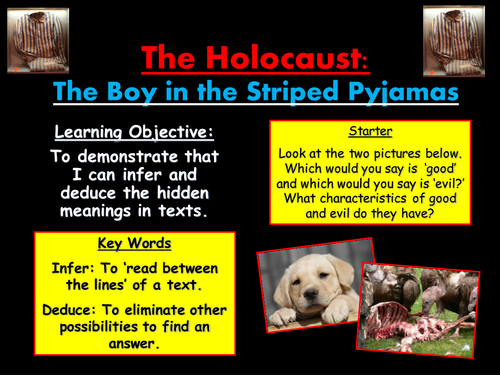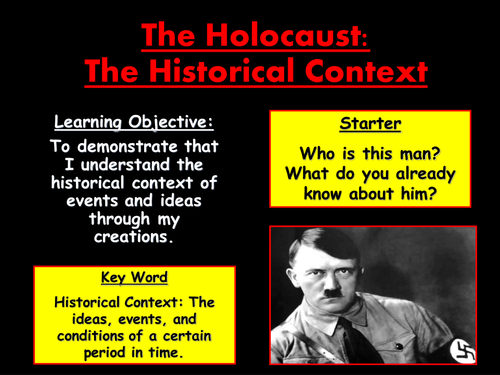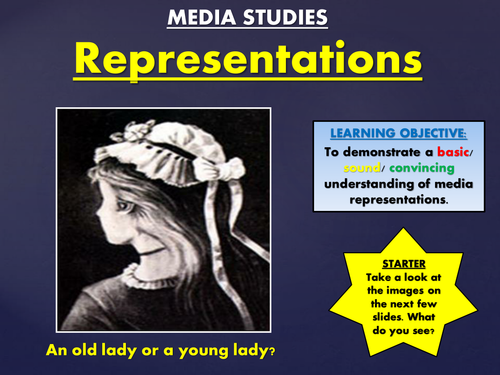
3k+Uploads
1904k+Views
2237k+Downloads
Personal, social and health education

Stone Cold - Homelessness!
This engaging and informative lesson helps students to understand one of the key themes running throughout Robert Swindells’ Stone Cold: Homelessness. Students use key information, research skills, and extracts from the text to understand how and why homelessness happens and who it can affect, before composing their own arguments about how they believe homelessness should be tackled.
The lesson follows a step-by-step learning journey, in which children learn through:
- Considering their own views towards homeless people, and thinking about how these were formed;
- Researching how and why people become homeless, and who it affects ;
- Reading an extract from 'Stone Cold' in which Link describes a night on the streets, to better empathise with those who are sleeping rough;
- Answering comprehension questions about the extract, considering the writer's use of language and retrieving textual information to back up their ideas;
- Forming their own arguments about how homelessness should be tackled, using their own research and the information gathered throughout the lesson;
- Peer assessing each other's learning attempts;
Included is:
- Whole lesson PowerPoint - colourful and comprehensive;
- Research Template;
- Selected extracts - Stone Cold - Link's description of a night on the streets;
- Writing to Argue Helpsheet;
- Comprehensive lesson plan.
There are also opportunities for group learning, speaking and listening, peer assessment, and whole class discussion. I originally used these resources with a year 8 class, however colleagues have used them for between years 5 and 9 with minimal adaptations. Please note that internet access/ use of research mechanisms is required for the introduction task.
All images are licensed for commercial use, and image rights are listed on the last page of the presentation.
Bundle Sale

Holiday Fun Activities Bundle!
Included in this bundle are hours of fun, interactive, and productive activities that have been tried and tested with hundreds of happy children. Not only are the activities engaging, they also enable young people to develop their key skills in areas as varied as: Literacy, Numeracy, Science, Art and Design, PSHE, and Speaking and Listening.
Included within the bundle are the following popular resources:
- Murder Mystery Investigation: Students use exhibits, maps, evidence, and budgeting skills in order to solve a murder mystery case;
- Fantasy Football Club Group Project: Students design and resource their own football team from scratch, using a limited budget and selection of classic and modern footballers;
- Stating Your Case for the World’s Greatest Sportsperson - Students use their researching, persuasive writing, and speaking and listening skills to argue the case for the best sportsperson of all time;
- Space Mission: Find Us A New Earth! - Students are given an imaginative scenario and real-life information about the current most hospitable exo-planets, and must use their scientific and literacy skills to build a case for the next planet humans should inhabit;
- Crazy Animal Limericks Anthology - Loads of fun animal limericks for students to read, and comprehension/ creative tasks for them to complete.
All that you have to do is print and go, everything that you need for these resources (including teacher guidance) is provided.
All images are licensed for commercial use, and are cited on the final slides of the presentations.

Fantasy Football Club Group Project!
A Russian billionaire, Asman Veryrich, has approached you about setting up a new football club!
This exciting, engaging investigation activity allows students to control the direction of their own learning, through speaking, listening, discussing, and reasoning. I initially created these resources to provide something interesting for the students to engage with for their English Speaking and Listening discussions, but it has since been used across Maths, Art and Design, and PSHE departments, as well as by form groups and holiday activity groups, to build teamwork and collaboration skills.
Students get involved in all of the fun aspects of designing and setting up a new football club, including selecting a team of players, a manager, a stadium, and a training ground. They also design the team's club badge and football kits. They also need to use their skills of literacy to read and understand key evidence, and skills of numeracy to ensure that they keep their expenses within budget! What is more, groups can compete against one another to create the most successful team in the league, as all of the resources that they choose can help them to acquire valuable league table points!
Included in this resource pack are:
- Full PowerPoint lesson talking students through the process;
- An 8 page team booklet, used to create their designs and calculate their budgets;
- A pack of 96 player cards and 12 manager cards to select from (a combination of new and classic footballers are included, to ensure that this will never be outdated);
- Budget and recording sheets to track their progress;
- An A3 football pitch to strategise and select their team.
Considering the time and effort that it took to create these resources, I think that they offer exceptional value. Whenever I have used this activity before, it has taken at least 3-4 lessons, including the introduction, design process, presentations, and evaluation. I originally have used this with mixed ability Year 9 and 10 groups, but colleagues have adapted it easily for students of all key stages.
All images have been cited at the end of the PowerPoint presentation and are licensed for commercial use.

Stating Your Case for the World's Greatest Sportsperson!
In this engaging and interactive lesson, students make the case for who they feel is the greatest sportsperson of all time. Within the lesson they develop skills of: persuasive writing, independent researching, personal and social comprehension, and speaking and listening. By the end of the lesson, students write and present their own case for the world's greatest sportsperson, using individually researched subject matter, structural advice, and understanding of persuasive techniques.
The learning follows a logical, bitesize journey, in which students:
- Discuss and define the key features of what they think makes a sportsperson 'great';
- Research how their own contender meets the features of greatness, using a well-scaffolded research template;
- Understand and exemplify each of the persuasive techniques, useful in convincing others of their case;
- Critically analyse the language, subject matter, and structure of a model example of a World's Greatest Sportsperson article;
- Write, present, and assess their own article.
Included is everything that you need to teach, including:
- Comprehensive, well-presented whole-lesson PowerPoint (students are led through the learning journey by an animated Usain Bolt character!);
- Research template and completed model example;
- Persuasive device cards for the card-sorting activity;
- Model example of a completed 'World's Greatest Sportsperson' article;
- Lesson plan.
This would be perfect as a part of an English persuasive writing or speaking and listening unit, a PSHE/Citizenship study of people and their achievements, or a Cross-Curricular activity for less structured learning time.
All images are licensed for commercial use, and are cited on the final slide of the presentation.
Bundle Sale

The Boy in the Striped Pyjamas Resources Bundle!
These varied and engaging resources have been designed to enhance the learning of John Boyne’s ‘The Boy in the Striped Pyjamas.’ They are perfect for aiding and developing comprehension, and also gaining a secure understanding of the social and historical context of the novel.
Included in this resources bundle are:
- The Boy in the Striped Pyjamas Comprehension Activities Booklet - 21 pages of comprehension activities aligned with the text;
- The Boy in the Striped Pyjamas Holocaust Lesson - Enabling students to link the text to its social and historical context;
- The Boy in the Striped Pyjamas Pointless Game - A fun and interactive way of securing understanding of the text.
The Boy in the Striped Pyjamas Knowledge Organiser/ Revision Mat - An hugely detailed resource aiding revision of all aspects of the novel!
All images are licensed for commercial use, and are cited at the end of presentations and in separate documents.
Bundle Sale

GCSE Poetry Huge Lesson Bundle!
This huge resource pack contains highly stimulating, detailed, and informative whole-lesson resources for 18 different poems - each of the poems feature on the new GCSE poetry lists for the vast majority of examining boards. In addition to this, the lesson on comparing poems is also included - essential for exam technique! The poems included are largely from the Relationships and War/Conflict poetry lists.
Individually, these resources are worth more than double the price of the bundle, meaning that you can make a considerable saving!
Each lesson employs a wide range of teaching and learning strategies, with a large variety of interesting tasks and ideas. This pack contains a whole-lesson PowerPoint presentation for each poem, in addition to all of the worksheets, task resources, and lesson plans that you need to teach.
Bayonet Charge - Ted Hughes
Before You Were Mine - Carol Ann Duffy
Dulce et Decorum est - Wilfred Owen
In Paris with You - James Fenton
Love's Philosophy - Percy Bysshe Shelley
Mametz Wood - Owen Sheers
Mother, Any Distance - Simon Armitage
Neutral Tones - Thomas Hardy
next to of course god america i - E.E. Cummings
Out of the Blue - Simon Armitage
Ozymandias - Percy Bysshe Shelley
Poppies - Jane Weir
Sonnet 116 - William Shakespeare
The Charge of the Light Brigade - Alfred, Lord Tennyson
The Falling Leaves - Margaret Postgate Cole
War Photographer - Carol Ann Duffy
What Were They Like? - Denise Levertov
When We Two Parted - Lord Byron
Comparing Poems!
All images are licensed for commercial use, and are cited on the final slide of the presentations.

Dragons' Den Persuasive Project! (Building Speaking & Listening and Persuasive Writing Skills!)
This resource is perfect for enabling students to build both their persuasive writing and their speaking and listening skills. Based upon the popular BBC series 'Dragons' Den', students have the opportunity to research, design, pitch, and evaluate arguments for their own inventions, whilst simultaneously analysing persuasive pitches, revising persuasive techniques, structuring arguments and articulating convincingly.
Included is a 16 page booklet (I would say at least 4-5 hour lessons of tasks) that lead students to:
- Introduce themselves and their interests;
- Watch persuasive pitches (links included) and identify persuasive devices;
- Analyse why persuasive devices are effective;
- Structure an analysis appropriately;
- Brainstorm ideas for an invention using imagination and helpful aiding questions;
- Formulate an argument by considering key questions and counter arguments;
- Write and present a persuasive pitch;
- Peer-evaluate and self-evaluate persuasive pitches.
I have also provided some examples of news stories featuring the worst and best pitches from the den, in order to provoke discussion about what makes a strong pitch.
All images are licensed for commercial use and are cited throughout.

Building Resilience Assembly!
This assembly aims to assist children in becoming resilient learners who are more willing to approach tasks, keep trying when tasks become difficult, and learn from their mistakes.
I love giving this assembly because I feel that the key message within it is so vital. More importantly, wherever I have given this assembly (to a wide-range of students from a wide-range of contexts) it has always gone down extremely well, with students being extremely engaged and informing me of their increased resilience in the months that follow!
The slides are visually engaging and well-presented, and the subject matter is tailored to the interests and needs of young people. For example, there are references to Justin Bieber, Beyonce, Andy Murray, JK Rowling and a host of other successful people in the public eye who have needed to overcome difficulties. There is also a hyperlink to a music video which utilises a ‘Rude Goldberg Machine’ which has been painstakingly set up, through months of set-backs and sticking points, to achieve an extraordinary result.
The slides are fairly self-explanatory, but I’ve included guidance notes to assist the speaker. Hope that you find this useful!

Stone Cold - Assorted Resources! (PowerPoints, Activities, Worksheets, Templates, etc.)
This pack contains a vast number (I think there's about 20 resources here) of activities, resources, and ideas for the teaching of Robert Swindell's 'Stone Cold.' They should provide an excellent starting point for anybody who wants to teach the book and is looking for some inspiration for individual lesson content/ tasks. The vast majority of these tasks can be adapted for differing age groups/ ability ranges/ needs.
The pack contains resources that focus on the key themes in the book, such as stereotyping, alienation, and homelessness. There are also resources that enable to build individual reading skills, such as inferring and deducing, pulling out quotations, and analysing language. In writing, students learn to think imaginatively and create texts appropriate to audience and purpose.
All images are licensed for commercial use, and are cited on the final slides of the PowerPoints.

Out of the Blue - Simon Armitage - 9/11 Poem
These informative and engaging resources enable students to build the skills needed to interpret and analyse the langauge used in poems. These resources also give students a strong foundation knowledge, including the SMSC implications, of the events of 9/11 - an important historical day that should never be forgotten.
Students learn through the following tasks:
- Collecting and discussing knowledge of the events of the day through an interactive starter task;
- Reading the poem 'Out of the Blue' and identifying the descriptive devices throughout the poem;
- Discussing a model analytical paragraph about the language used in the poem, in order to form their own success criteria;
- Using a template to form their own analytical paragraphs about the language used in the poem;
- Using peer or self-assessment in order to establish their success at analysing language.
The following resources are provided:
- Engaging and colourful step-by-step PowerPoint
- Poem
- Teacher lesson guidance;
- Identifying worksheet;
- Analysis template;
- Writing to analyse help-sheet
- Analysis model
All images are licensed for commercial use, and are cited on the final slide of the PowerPoint.

Murder Mystery Investigation!
There's been a murder!
This exciting, engaging investigation activity allows students to control the direction of their own learning, through speaking, listening, discussing, and reasoning. I initially created these resources to provide something interesting for the students to engage with for their Functional Skills Speaking and Listening discussions, but it has since been used across Citizenship and PSHE departments, as well as by form groups, as a catalyst for social and moral discussions.
Students play detectives aiming to solve the case of a death of an old lady. Using a range of evidence, from video clips, to interviews with key suspects, to positioning events on maps, students work in teams to try and solve the case. They must use skills of communication, to decide which leads to prioritise, and which evidence to discount. They also need to use their skills of literacy, to read and understand key evidence, and skills of numeracy to ensure that they keep their case within budget!
Included in this resource pack are:
- Full PowerPoint lesson talking students through the case;
- A range of 'Exhibits' - evidence that the students use to build a case, including video clips;
- A map of the local area, to help visualise the events leading up to the death;
- Budgetting and recording sheets to track their progress;
- A prime supsects list;
- Clue cards containing interviews with prime supsects;
- Full teacher guidance.
Considering the time and effort that it took to create these resources, I think that they offer exceptional value. Whenever I have used this activity before, it has taken at least 2-3 lessons, including the introduction, investigation, conclusions, and evaluation. I orignally have used this with lower ability Year 8,9, and 10 groups, but colleagues have adapted it easily for students of all key stages.
All images have been cited at the end of the PowerPoint presentation and are licensed for commercial use.

Speaking and Listening - Stating Your Case and Linking Ideas Together
This lesson serves as an engaging and confidence-building introduction to any speaking and listening unit. Students learn to use facts and opinions to state their case about a number of interesting and topical issues, whilst also building towards using a range of connectives to link their ideas together.
The lesson also links strongly to PSHE and Citizenship, as students discuss a range of moral and ethical issues, whilst simultaneously building their skills of communication.
Included in the lesson are: a visually stimulating, step-by-step PowerPoint presentation, a student guidance sheet to scaffold and shape student responses, and teacher guidance to aid practitioner implementation.

The Holocaust: The Boy in the Striped Pyjamas
This lesson aims to help students to build their skill at inferring and deducing the hidden meanings in texts, whilst also providing students with valuable SMSC messages about the horror of the Holocaust. Students also hone their skills of writing to argue, utilising information that they gain from reading extracts of John Boyne's 'The Boy in the Striped Pyjamas.'
Informative and engaging, this lesson follows a clear and logical learning journey. Students learn to:
- Define key terms related to reading between the lines of a text;
- Consider the concepts of 'good' and 'evil' using the poem 'Vultures.' Use this knowledge to consider the actions of those involved in the Holocaust;
- Read extracts from The Boy in the Striped Pyjamas;
- Answer a range of questions designed to demonstrate students' ability to infer and deduce the hidden meanings in texts;
- Write an argumentative letter from Bruno's Grandma to his father, using a writing to argue help-sheet;
- Peer-assess each others' learning attempts.
Included in this resource pack: A comprehensive, whole-lesson, visually engaging PowerPoint presentation, which guides the teacher and learners through the lesson, a writing to argue help-sheet, a copy of the poem 'Vultures,' extracts from 'The Boy in the Striped Pyjamas' and teacher guidance notes.
All images are cited at the end of the PowerPoint presentation, and are licensed for commercial use.

The Holocaust: Anne Frank's Diary
This lesson aims to help students to build their skill at analysing the language choices in texts, whilst also providing students with valuable SMSC messages about the horror of the Holocaust. Students also hone their skills of writing to analyse, in response to extracts from 'Anne Frank's Diary.'
Informative and engaging, this lesson follows a clear and logical learning journey. Students learn to:
- Define key terms related to the historical context of The Holocaust;
- Remember and understand key information about Anne Frank's experiences, that they learn from an engaging PowerPoint presentation;
- Read extracts from Anne Frank's diary;
- Answer a range of questions to demonstrate their understanding of Anne's diary;
- Analyse the language features used by Anne Frank to create dramatic images in the mind of the reader;
- Peer-assess each others' learning attempts.
Included in this resource pack: A comprehensive, whole-lesson, visually engaging PowerPoint presentation, which guides the teacher and learners through the lesson, a writing to analyse help-sheet, an engaging and helpful worksheet, extracts from 'The Boy in the Striped Pyjamas' and teacher guidance notes.
All images are cited at the end of the PowerPoint presentation, and are licensed for commercial use.

The Holocaust: The Historical Context
This lesson aims to help students understand the historical context of The Holocaust. It is designed to be the first in a series of lessons based upon Holocaust-themed texts, but also makes a fitting introduction to teaching texts such as The Boy in the Striped Pyjamas, Anne Frank's Diary, or simply to be used in a PSHE/form-time lesson to build awareness.
Informative and engaging, this lesson follows a clear and logical learning journey. Students learn to:
- Define key terms related to the historical context of The Holocaust;
- Remember and understand key information about the Holocaust that they learn from an engaging PowerPoint presentation;
- Consider the SMSC questions that arise from such a horrific case of genocide;
- Create a newspaper article that utilises the features of writing to inform, and shares key facts about the Holocaust;
- Peer-assess each others' learning attempts.
Included in this resource pack: A comprehensive, whole-lesson, visually engaging PowerPoint presentation, which guides the teacher and learners through the lesson, a writing to inform help-sheet, a tabloid newspaper template, ' a key terms activity, and teacher guidance notes.
All images are cited at the end of the PowerPoint presentation, and are licensed for commercial use.

Representations in Media Studies
This visually-engaging and informative resource is perfect for helping Media students to understand the key concept of Representations. Through a range of different and interesting tasks , students learn to identify and understand representations at work in the media, and become familiar with key terms such as 'stereotyping; and 'aspects of character.'
The learning journey is progressive and step-by-step, allowing for bite-size chunks of progress to be evident and regular intervals. Students learn to:
- Understand that everyone sees images and ideas differently;
- Define the key terms 'representations' and 'stereotypes;'
- Understand some common representations and stereotypes;
- Analyse the reasoning and effects of different representations;
- Analyse how different characters are represented in a key media text.
The key media text that I have chosen for the main analysis task is the movie 'Warrior' (2011) starring Tom Hardy, but the resources can be easily adapted to suit different media texts should you choose to.
All images are licensed for commercial use and are cited on the final slide of the presentation.

